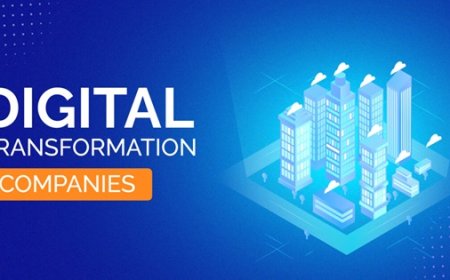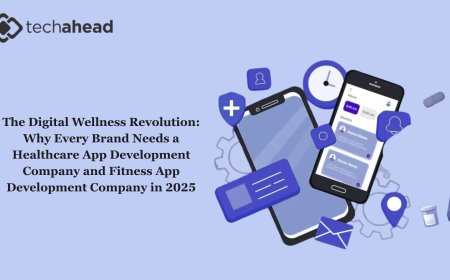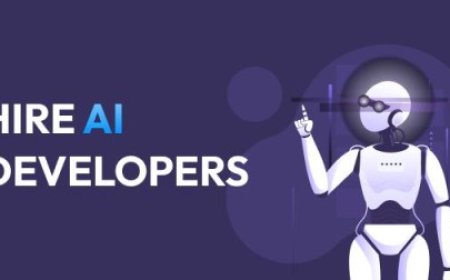Agile Android App Development: The Engine for Engagement and Growth
Boost user engagement and business growth with agile Android app development. Leverage flexible, scalable, and high-performance mobile solutions tailored to your goals.

In today's hyper-competitive mobile landscape, simply launching an Android app isn't enough. To truly succeed, apps need to capture user attention, foster consistent engagement, and drive sustainable growth. This is where Agile Android app development shines. Far from a mere buzzword, Agile is a transformative methodology that empowers teams to deliver value rapidly, adapt to evolving user needs, and ultimately build apps that users love and stick with.
This blog post will delve deep into how Agile principles and practices are revolutionizing Android app development, directly contributing to enhanced user engagement and accelerated growth.
The Challenge: Why Traditional Approaches Fall Short
Before we explore the power of Agile, let's understand why traditional, Waterfall-style development often struggles in the dynamic world of mobile apps. In a Waterfall model:
- Rigid Planning: Requirements are defined upfront, leading to lengthy planning phases. Any changes later in the cycle are costly and disruptive.
- Late Feedback: Users typically see the product only at the very end, by which time it might not align with their actual needs or market trends. This can lead to significant rework or, worse, a product nobody wants.
- Slow Time-to-Market: The sequential nature means a long wait before the app is released, potentially missing market opportunities.
- Limited Adaptability: The inability to easily incorporate feedback or pivot based on market shifts makes it difficult to stay relevant.
These limitations are particularly detrimental in the fast-paced app ecosystem, where user preferences shift rapidly and new competitors emerge constantly.
Agile to the Rescue: A Paradigm Shift for Android Apps
Agile development, with its iterative and incremental approach, directly addresses these challenges. It's a philosophy built on collaboration, flexibility, and continuous improvement. Here's how its core tenets translate into tangible benefits for Android app development:
1. Faster Time-to-Market and Continuous Delivery
Agile methodologies, particularly Scrum, break down the development process into short, time-boxed iterations called sprints (typically 1-4 weeks). Each sprint aims to deliver a potentially shippable increment of the app.
- Incremental Releases: Instead of a single, massive launch, Agile allows for frequent, smaller releases. This means users can get their hands on core functionalities much sooner, providing immediate value.
- Early Feedback Loops: With frequent releases, user feedback can be gathered and integrated into subsequent sprints. This continuous feedback loop ensures the app evolves in line with user expectations, leading to higher satisfaction and retention.
- Reduced Risk: By releasing small increments and getting early feedback, potential issues or misalignments can be identified and corrected quickly, preventing costly rework later in the development cycle.
For Android apps, this means you can launch a Minimum Viable Product (MVP) with essential features, test market reception, and then iteratively add more functionalities based on real user data and preferences.
2. Enhanced User Engagement Through User-Centricity
At its heart, Agile is deeply user-centric. It prioritizes understanding and addressing user needs throughout the development process.
- User Stories: Requirements are often articulated as user stories, focusing on what a user wants to achieve and why. This keeps the team's focus on delivering value from the user's perspective.
- Continuous User Feedback: Agile teams actively seek feedback through various channels, including in-app surveys, app store reviews, user interviews, and analytics. This data directly informs backlog prioritization and future feature development.
- Personalization and A/B Testing: The iterative nature of Agile allows for constant experimentation. Teams can A/B test different UI/UX elements, features, and onboarding flows to identify what resonates most with users and drives engagement.
- Rapid Adaptation to User Needs: If user analytics reveal a particular feature isn't being used, or a new trend emerges, Agile teams can quickly pivot and adjust their roadmap, rather than being locked into a predefined plan. This responsiveness is crucial for keeping users engaged in a dynamic market.
By consistently delivering features that users genuinely want and refining the experience based on their interactions, Agile development naturally leads to higher engagement, increased session lengths, and improved retention rates.
3. Driving Growth Through Iterative Improvement and Data-Driven Decisions
Growth in the app world isn't just about initial downloads; it's about sustained usage and expanding your user base. Agile provides the framework for this:
- Data-Driven Decision Making: Agile teams heavily rely on analytics to track key engagement metrics such as Daily Active Users (DAU), Monthly Active Users (MAU), churn rate, session depth, and feature adoption. This data provides actionable insights into user behavior, allowing teams to make informed decisions about what to build next.
- Optimized Resource Utilization: By prioritizing features based on their potential impact on engagement and growth, Agile ensures that development efforts are focused on what matters most, leading to efficient use of resources.
- Scalability and Adaptability: As the app grows and user needs evolve, Agile allows the development process itself to adapt. Teams can scale up or down, and the flexible nature of the methodology can accommodate new technologies or platform changes.
- Reduced Technical Debt: Agile encourages continuous attention to technical excellence. Regular code reviews and refactoring help prevent the accumulation of technical debt, which can hinder future development and negatively impact performance, ultimately affecting user experience.
Key Agile Practices for Android App Success
To effectively implement Agile for Android app development and reap its benefits, consider these key practices:
- Scrum Framework: Scrum is one of the most popular Agile frameworks for a reason. Its structured approach with defined roles (Product Owner, Scrum Master, Development Team), events (Sprint Planning, Daily Scrums, Sprint Review, Sprint Retrospective), and artifacts (Product Backlog, Sprint Backlog) provides a clear roadmap for iterative development.
- Kanban Boards: For visualizing workflow and managing tasks, Kanban boards are invaluable. They offer a clear overview of work in progress, bottlenecks, and completed tasks, promoting transparency and efficiency.
- Cross-Functional Teams: Agile thrives on self-organizing, cross-functional teams. For Android app development, this means having developers, UI/UX designers, QA testers, and product owners working closely together, fostering seamless communication and shared understanding.
- Continuous Integration/Continuous Delivery (CI/CD): Automating the build, test, and deployment processes through CI/CD pipelines significantly accelerates the delivery of new features and bug fixes, ensuring a consistent and high-quality app experience.
- Automated Testing: Integrating automated testing (unit tests, integration tests, UI tests) into the development pipeline helps catch bugs early, maintain code quality, and ensures the app remains stable with each new release.
- Regular Retrospectives: After each sprint, the team holds a retrospective to reflect on what went well, what could be improved, and to identify actionable steps for future sprints. This commitment to continuous improvement is a cornerstone of Agile.
Tools That Facilitate Agile Android Development
Numerous tools support Agile practices and enhance collaboration in Android app development:
- Project Management Tools: Jira, Trello, Asana, Monday.com, and ClickUp are popular choices for managing backlogs, sprints, and tasks.
- Collaboration Tools: Slack and Confluence facilitate real-time communication and documentation.
- Version Control Systems: GitHub and GitLab are essential for managing code changes and fostering collaborative development.
- Android Development Environment: Android Studio, the official IDE for Android, provides a comprehensive set of tools for coding, debugging, and testing.
- Analytics Platforms: Google Analytics for Firebase, Mixpanel, and Userpilot offer invaluable insights into user behavior and app performance, crucial for data-driven Agile iterations.
The Bottom Line: A Sustainable Path to App Success
Agile Android app development is not just a methodology; it's a mindset that prioritizes user value, adaptability, and continuous improvement. By embracing short feedback loops, iterative development, and a strong focus on user needs, businesses can build Android apps that not only attract users but also keep them engaged, delighted, and coming back for more. In an increasingly competitive digital landscape, Agile provides the essential framework for sustainable app growth and long-term success.


























